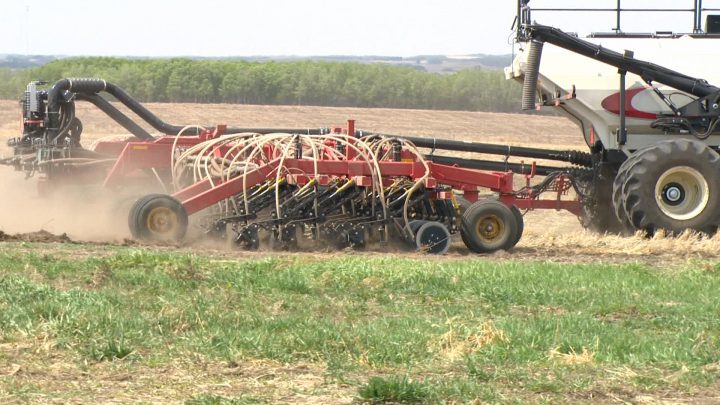Farmers in Saskatchewan have been battling rain, wind, hail, drought and other extreme weather conditions this spring as they try to get crops in the ground.

“We’ve had a little bit of everything,” said Shaul Dyrland, who grows barley and pulses including lentils in the province’s south near Kyle. “We’ve had frosts, we have had unseasonably hot weather, lots of wind (and) we’ve had a bit of a drought in our area.
“We’re also coming off of about four years of below-average moisture, and we’re still at about 50 per cent of our average precipitation for the growing season. There have been lots of challenges.”
Dyrland says he had to delay his planting because of dry conditions and he is not alone.
Saskatchewan’s latest crop report says most farmers need more rain, especially in the southern and west-central regions.
Other areas of the province, including Old Wives Lake, Big Beaver, Frobisher and Moosomin experienced more than 100 millimetres of rainfall and flooding earlier this month, says the report.
The report says abut 15 per cent of pulse crops, 19 per cent of spring cereals, 21 per cent of fall cereals and nearly one-third of oilseeds are behind at this point of the growing season.
“Eventually, we did get some rains and things took off, but then a hot few days have been rough on stuff,” said Dyrland. “It really takes a lot of moisture and we don’t have any extra to give.”

Get breaking National news
Dyrland says many of his fellow farmers trying to get their crops sprayed to control insects and disease have faced challenges due to high winds.
“It just doesn’t seem to stop blowing.”
The provincial report says the winds have already damaged bins, buildings and crops.
Brett Halstead, board chairman of the Sask Wheat Development Commission and a farmer himself, says the wind has been a major problem for wheat growers.
“It’s been windy almost every day, so it puts you behind on spraying,” said Halstead, who farms near Nokomis, Sask., about 170 kilometres southeast of Saskatoon. “It does stress the crop a bit, and it dries out the moisture in the soil.”
And while he appreciated the rain in late May and early June, his farm could certainly use more, he said.

“I wouldn’t say we’re desperately dry, but we’re still dry here. And that goes back several years that it’s been a little dry here.”
This year, Environment Canada is predicting warmer-than-average summer temperatures in southern areas of the province and colder summer temperatures in the north. The federal agency is also forecasting lower-than-average precipitation in the province’s southwest.
Halstead knows exactly what sort of weather conditions he hopes to see for planting and spraying.
“Rain, moderate temperatures and less winds, but that’s a lot to ask, isn’t it?”







Comments